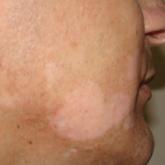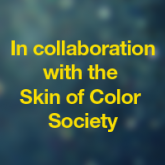Cosmetic Corner

Dr. Mookadam is from the Department of Family Medicine, Mayo Clinic, Scottsdale, Arizona. Dr. Mesinkovska is from the Department of Dermatology and Dermatopathology, Cleveland Clinic, Cleveland, Ohio. Dr. Bridges is from the Department of Dermatology and the Department of Laboratory Medicine, Mayo Clinic, Rochester, Minnesota.
The authors report no conflict of interest.
This research was presented in part at the 28th Symposium of the International Society of Dermatopathology; November 14-17, 2007; Paris, France.
Correspondence: Alina G. Bridges, DO, Department of Dermatology, Mayo Clinic, 200 First St SW, Rochester, MN 55905 (bridges.alina@mayo.edu).

Extrafacial GF primarily affects white individuals and is more prevalent in men, as demonstrated in our study. Extrafacial GF was most often found in association with facial lesions, with only 3 patients having exclusively extrafacial sites.
Data from the current study indicate that diverse modalities were used to treat extrafacial GF with variable outcomes (chronic recurrence to complete resolution). The most common first-line treatment, intralesional corticosteroid injection, was used in 5 (50%) patients but resulted in only 1 (10%) successful resolution. Other methods frequently used in our study and prior studies were surgical excision, cryotherapy, electrosurgery, and dermabrasion.1,20 These treatments do not appear to be uniformly definitive, and the ablative methods may result in scarring.1 Different laser treatments are emerging for the management of GF lesions. Prior reports of treating facial GF with argon and CO2 lasers have indicated minimized residual scarring and pigmentation.21-23 The use of pulsed dye lasers has resulted in complete clearance of facial GF lesions, without recurrence on long-term follow-up.20,24-26
The latest investigations of immunomodulatory drugs indicate these agents are promising for the management of facial GF. Eetam et al27 reported the successful use of topical tacrolimus to treat facial GF. The relatively low cost and ease of use make these topical medications a competitive alternative to currently available surgical and laser methods. The appearance of all of these novel therapeutic modalities creates the necessity for a randomized trial to establish their efficacy on extrafacial GF lesions.
The wide array of treatments reflects the recalcitrant nature of extrafacial GF lesions. Further insight into the etiology of these lesions is needed to understand their tendency to recur. The important contribution of our study is the observed predilection of extrafacial GF for sun-exposed areas such as the scalp, upper trunk, and arms and legs. This pattern of extrafacial distribution along with the lack of mucosal involvement suggests a possible connection with UV light exposure. Furthermore, one of the extrafacial GF lesions in our study occurred in association with a squamous cell carcinoma, which may be an additional indication that these sites have been subjected to sun damage. This finding strengthens the importance of obtaining an adequate skin biopsy of any well-demarcated plaque or nodule found on the trunk, arms, and legs. The observed GF prevalence on sun-exposed areas and association with photoexacerbation have been speculated in prior studies, but no clear connection has been established.1,28
The findings from this study and the cases reviewed in the literature provide a unique contribution to the understanding of the clinical and demographic characteristics of extrafacial GF. The rarity of this condition is the single most important constraint of our study, reflected in the emblematic limitations of a retrospective analysis in a select group of patients. The results of analysis of data from our patients were similar to the findings reported in the English-language medical literature. Serious consideration should be given to the development of a national registry for patients with GF. A database containing the clinicopathologic features, treatments, and outcomes for patients with both facial and extrafacial manifestations of GF may be invaluable in evaluating various treatment options and increasing understanding of the etiology and epidemiology of the disease.


Melanoma-associated hypopigmentation frequently has been reported during the disease course and can include different characteristics such as...

The US Census Bureau predicts that more than half of the country’s population will identify as a race other than non-Hispanic white by the year...
